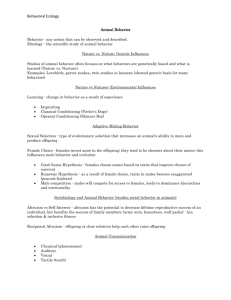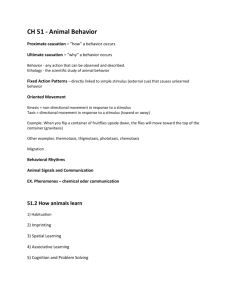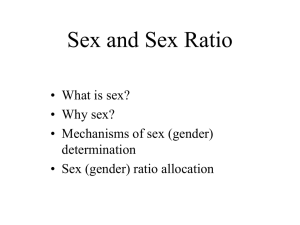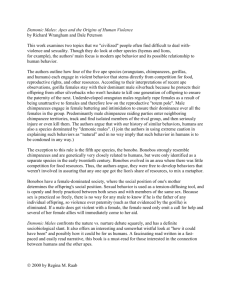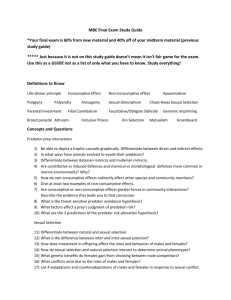Do Females Select Mates Based on Traits Indicative of “Good Genes”?
advertisement
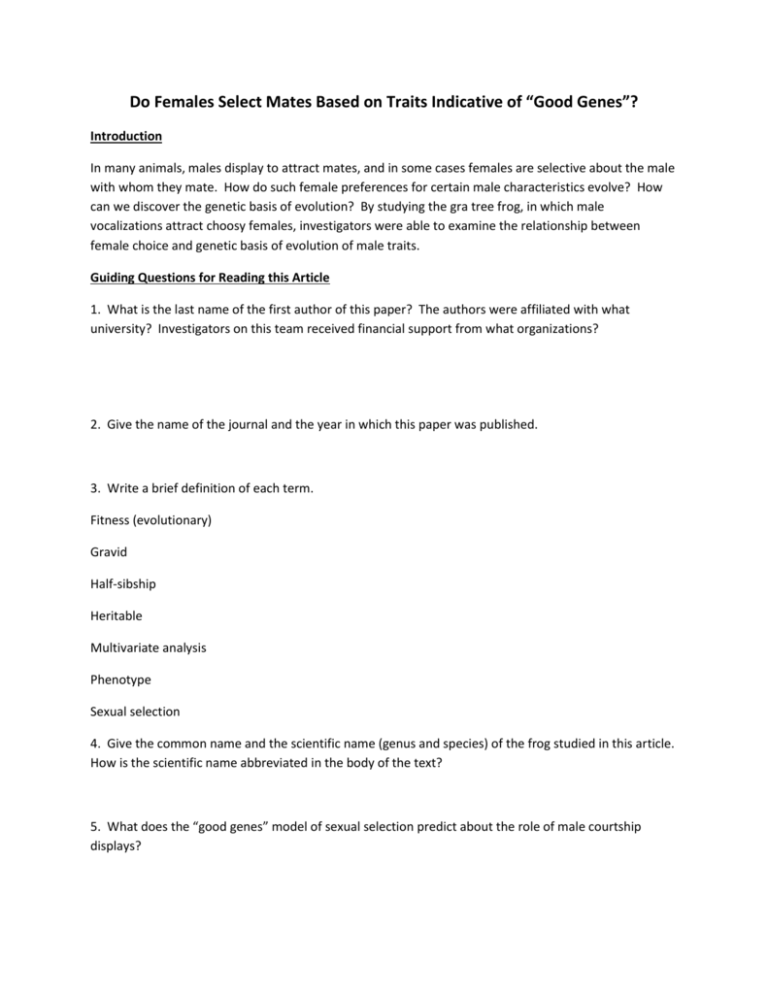
Do Females Select Mates Based on Traits Indicative of “Good Genes”? Introduction In many animals, males display to attract mates, and in some cases females are selective about the male with whom they mate. How do such female preferences for certain male characteristics evolve? How can we discover the genetic basis of evolution? By studying the gra tree frog, in which male vocalizations attract choosy females, investigators were able to examine the relationship between female choice and genetic basis of evolution of male traits. Guiding Questions for Reading this Article 1. What is the last name of the first author of this paper? The authors were affiliated with what university? Investigators on this team received financial support from what organizations? 2. Give the name of the journal and the year in which this paper was published. 3. Write a brief definition of each term. Fitness (evolutionary) Gravid Half-sibship Heritable Multivariate analysis Phenotype Sexual selection 4. Give the common name and the scientific name (genus and species) of the frog studied in this article. How is the scientific name abbreviated in the body of the text? 5. What does the “good genes” model of sexual selection predict about the role of male courtship displays? 6. In testing the “good genes” model, why was it significant to use a species in which females themselves do not benefit directly from choice of good mates? 7. In field observations of this species, what suggests that females exhibit mate choice? What observations of the males indicate that females receive no direct benefit from male choice during mating? 8. Some male frogs consistently produce calls of longer duration. What was noted about the behavior of males that produce long calls? 9. Why did the investigators think that long calls are potentially costly, and why did they decide that call duration might be an honest indicator of male genetic quality? 10. Why did the investigators use maternal half-sibships in testing whether male call duration indicated heritable genetic quality? 11. How many male frogs and how many female frogs were used in these experiements? 12. From Table 1 of the article, what was the difference in call duration, both in pulses per call and length in seconds, between long-callers and short-callers in 1995? 13. What is “calling effort”? Based on Table 1, how did it differ in long-callers and short-callers? 14. How many tadpoles were raised under what conditions? When rearing the offspring, why did investigators raise tadpoles in two food levels? How did investigators assign individual tadpoles to the various test groups? 15. What were some of the measures in offspring performance listed in Table 2? In cases in which offspring results differed between long-callers and short-callers, offspring of which of the two groups had better performance? 16. Is this an observational study, in which quantitative, observational data are taken but no experimental manipulation is made, or is this an experimental study, in which researchers make manipulations by which the effects of different variables are tested, one at a time? 17. Is this a field study, with data collected on organisms in their natural habitat, or is this a lab study, in which organisms are studied under controlled conditions in the laboratory? 18. What was the general conclusion about the relation of male call duration and offspring performance? 19. The authors conclude that males with relatively long calls sired offspring with higher-quality phenotypes. Based on that result, list the steps by which long male calls evolved by natural selection. 20. Gray tree frog females choose males based on their call duration. Given the offspring performance results from this study, explain how female choice and preference for long-caller males could have evolved by the process of natural selection. 21. Imagine that you were a member of this research team and involved in these experiments. What could be a possible follow-up test that extends this work? Briefly state another experiment or measurement you would do within this research system.
